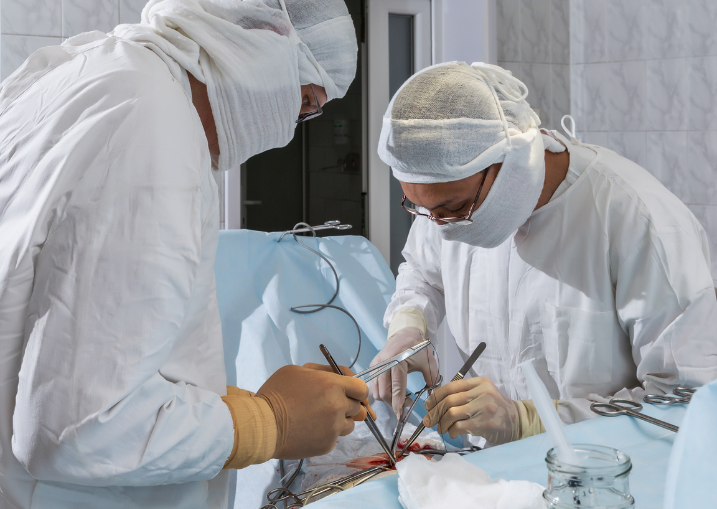Employ Proactive Preference Cards for Better Operating Room Efficiency
We’ve talked at length about the myriad of issues that mismanaged preference cards cause for hospitals. From contributing to nurse and physician burnout and frustration to costing hospitals millions of dollars each year to making an inscrutable mess of the hospital supply chain, preference cards are a bane to OR operations in hospitals across the country. At the same time, they have the potential to be a powerful tool that fosters operating room efficiency and enables effective inventory management.
Yet many clinicians take dirty preference cards for granted. Over time, hospitals have become accustomed to them, despite the severity of the problems they create. When items needed for surgery are left off the pick list, for example, a clinician may be assigned specifically to fetch them during a surgical procedure. Hospitals may delegate whole teams of people to sterilizing and restocking unused surgical supplies. Extra space may be scrounged for excess inventory caused by overstock and obsolete supply items: a rarely used hallway, perhaps, or an empty office. These band-aid solutions are far from ideal – they result in grave misuse of hospital space and clinical labor – but they may mask some of the larger issues at hand, such as the waste of disposable supplies and lack of supply chain and operating room efficiency.

Because they are so accustomed to the status quo, therefore, it may be difficult for some clinicians to understand the extent of the benefits of effective preference card management before they have fully experienced them. Besides the more obvious advantages – less wasteful spending, decreased overhead costs, better patient care, happier surgeons and nurses – the fact that preference card management can be a proactive exercise rather than a reactive one frequently escapes notice.
Why Is Traditional Preference Card Management Reactive?
For most hospitals, processes for maintaining and updating preference cards remain stubbornly reactive. Changes to cards frequently occur only after the problems caused by inaccurate cards begin to snowball. Physicians are often consulted only after they have expressed frustration. OR interruptions may occur regularly. Clinicians become irritated at having to return more than half of the supplies on a case pick list. Perhaps a nurse realizes that he or she spends up to a quarter of operating time fetching required supplies that were left off the pick list. Maybe hospital leadership has become painfully aware of the massive supply waste the hospital expends every year. Or perhaps, as in the case of the COVID-19 pandemic, the hospital supply chain buckles under the pressures of the unexpected.
By the time these problems are addressed, they have already caused damage. They may be put to rights temporarily; perhaps there is a hospital-wide push to update all preference cards, or a consultant is brought in to re-train staff. But these are reactive solutions that will only have to be implemented again when the problem inevitably returns. These situations are obviously far from ideal, but they remain pervasive because manual preference card management lends itself to reactivity.
Lack of Predictable Updates
Physician preferences do not change in any kind of predictable way; preference cards may need updating for any number of reasons. A hospital could initiate a facility-wide vendor change and stock a slightly different product. A developing technology could create superior products that replace older versions. Physicians may compare methods of operating with their peers and decide to try something new. Similarly, updates may happen at any time. Without any sort of regularity, therefore, it is a challenge for clinical staff to make updates to preference cards on any kind of predictable schedule. Thanks to this lack of consistency, the manner in which physicians communicate desired card updates is likewise ad hoc and unpredictable. As a result, preference card clean-up is nearly always a reactive exercise in which updates to cards are made only after errors are perceived and have likely created problems.
Manual Labor
Additionally, the heavily manual nature of traditional preference card management contributes to its reactivity. Depending on the number of operating rooms they run, hospitals may have several hundred to several thousand preference cards in circulation, all of which must be maintained as physician preferences change. Given the excessive amount of labor it would take to proactively update such a number of cards, it is no surprise that the job becomes a reactive one, and cards are updated as their data deteriorates to such an extent that they can no longer be ignored.
Lack of Transparency
Finally, lack of transparency between the OR and the hospital supply chain contributes to the reactive nature of preference card management. Preference cards are data streams that serve as the link between the OR and supply chain. Ideally, they should inform supply chain as to what inventory the hospital actually needs while informing the OR as to the changes supply chain is making to inventory. But thanks to the siloed process that exists in most hospitals, supply chain has little if any access to preference card data. As a result, supply chain does not have a clear picture of what is actually needed in the OR, and it may only take steps to update inventory after issues such as massive overstock and expired stock arise.
Proactive vs Reactive Preference Card Management
The idea of a proactive process no doubt holds many obvious advantages over a reactive one simply by virtue of its being enterprising and dynamic. But in the discussion of preference card management, there are specific harms of a reactive process and benefits of a proactive process that should not go unmentioned.
Missed Opportunity
Perhaps the greatest fallout of reactive preference card management stems from missed opportunity – whether it be slashing supply costs, reducing overstock, or standardizing supplies for specific procedures. Reactive preference card management operates by responding to problems. Solving those problems may allow the hospital to take advantage of whatever opportunity the problems were obstructing, but the hospital cannot take advantage of opportunity it doesn’t yet know about. Without proactive preference card management, hospitals may be sitting on major opportunities for cost savings and improved supply chain and operating room efficiency without ever knowing it.
Greater Stress
Additionally, it is important to acknowledge the stress for physicians and nurses that inevitably accompanies reactive preference card management. When the process is reactive, it is dependent upon responding to physician complaints and problems that have already mushroomed. Thus the process is frequently accompanied by frustration, which can make an already stressful job even more unnecessarily so for surgeons and clinicians. This situation should always be a concern for hospitals, but especially now as burnout for nurses and physicians climbs to an all-time high.
The Benefits of Proactive Preference Card Management
The benefits of proactive preference card management, on the other hand, should come as no surprise. Most of us would agree that solving a problem proactively – anticipating the problem before it presents itself – is virtually always better than responding to it reactively. A proactive process solves a problem before it balloons and identifies improvements beyond merely those that solve glaring issues. A reactive fix rarely translates into an improved process, while a proactive one can work to ensure that past problems do not occur again.
Proactive preference card management solves a multitude of problems for the OR and supply chain. In order to become proactive, preference card management needs to overcome its unpredictability, manual nature, and lack of transparency. In other words, it must be an ongoing, automated, and collaborative exercise. By leveraging preference card data instead of letting it deteriorate, hospitals can achieve greater operating room efficiency and cost savings, reduce supply waste, and ensure better job satisfaction for physicians and nurses.




